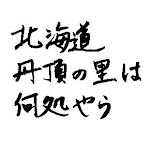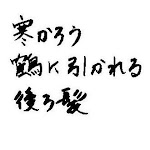Let me share the excitement of seeing the Tancho cranes for the first time. I flew from Tokyo to Kushiro, Hokkaido, on December 31, 2007. As soon as I checked into my hotel, I carefully walked on the icy ground and took the bus to the first sanctuary called "Tsurumidai."
You will never guess what happened next. I was so excited that I went running up to the fence waving my arms and screaming with delight. A whole bunch of cranes immediately took flight into the twilight sky. This also started a chain reaction, and other groups of cranes took to flight to the great disappointment of everyone standing there watching in the freezing evening air. Oh, my god, I thought. Somebody should hit her (meaning
me) in the head.
Also, during this twilight trip, I met some wonderful travelers--a bird watcher from England and a young couple from Hong Kong. We were about the only passengers in the bus back to the Kushiro Station. These travelers gave me valuable tips which increased my enjoyment of the cranes the next day.
I spent almost the entire New Year’s Day, 2008, enjoying the cranes at two more sanctuaries. This
LINK shows you what I saw at the sanctuary called "Akan Tancho no Sato" (Akan Home of Tanchou). I met and became friends with another wonderful traveler, who did this beautiful job presenting the crane photos. Can you see a handful of birds with the brown head and neck? They are juveniles that remain close to their parents. Despite their full size, they were chirping “Piyo piyo piyo piyo…” almost like baby chickens.
From this sanctuary, I called a taxi to go over the mountain to the “Tsurui/Itoh Tancho Sanctuary.” There I saw more cranes and greeted the rangers that I was in contact with before flying from the U.S. Then I went back to “Tancho no Sato” to enjoy more time with the cranes until the one and only bus came by on its way back to the JR Kushiro station. If you miss this bus, I guess they will find you frozen in the morning.
On January 2nd, before flying to Haneda, I took a JR train to Shibecha to see the Kushiro marsh. The marsh, being frozen over, looked like a white field with patches of bare ground and yellow grass. About 40 minutes into the train ride, I heard a passenger shout, "Tsuru!" About a dozen cranes were standing nearby in a white field. This station before Shibecha is called “Kayanuma” and is known to be the only station in Japan where the cranes visit.
This
LINK lets you see the cranes dancing and hear them singing. A male goes "Kooo" and the female goes "Ko Ko" in response. Can you hear the duet? When they sing flying in the cold air, it has an unforgettable quality.
As I was enjoying the cranes at "Tancho no Sato," a caretaker told me this: Some of those cranes may not be with us next year. They can crash into electric wires and meet other types of accidents. Although the cranes are fierce fighters, they can be attacked by predators, too. For this reason, they always sleep standing on one leg immersed in a shallow river no matter how cold the weather gets. Later my friend told me about the ice forming on cranes' legs that he read about in a front-page article of the January 10th Asahi Newspaper. I am moved by the cranes' beauty, the nature of their existence, and their haunting voice.
As I was getting ready to leave “Tancho no Sato,” the cranes were also leaving for the evening. Suddenly a group of three cranes took off in the opposite direction from the rest, made a big U-turn, and flew right over my head before joining others. I was quiet this time.
Here are the special shots. Please click to enlarge.














